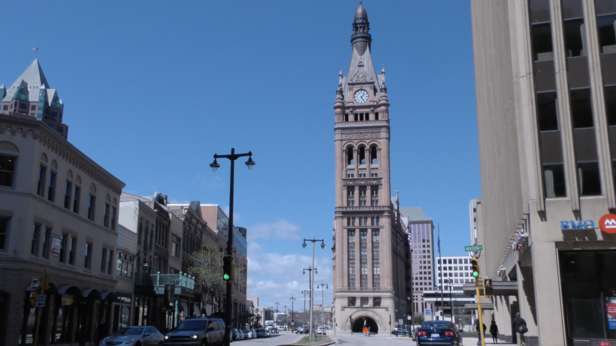
Debt is Milwaukee’s Fastest Growing Budget Item Under Mayor Barrett
July 19, 2017
A MacIver Perspective By Bill Osmulski
There are two words that characterize every budget in the City of Milwaukee since Tom Barrett became mayor: borrow and spend.
When he took over in 2004, the city’s annual budget was $856 million. As of 2015, it was $1.5 billion. Annual borrowing went from $90 million to $285 million. Outstanding debt went from $583 to $720 million. The annual debt service payment went from $103 million to $450 million, a 275 percent increase.
To give that $450 million debt service payment some context, that’s more than Milwaukee’s total public safety budget – which includes the police and fire departments – by $32 thousand.
Barrett is sounding the alarm over his city’s dire finances. However, instead of going after out-of-control borrowing, he’s zeroed in on the police department.
In June, he told the Journal Sentinel that since last year the police department’s budget has been bigger than the city’s entire tax levy. Of course, his debt service payments have been larger than the city’s entire tax levy since 2010. Regardless, under this pretext, Barrett threatened to layoff 84 police officers and 75 fire fighters if he can’t close a $26.9 million budget gap. Naturally, he blames the state of Wisconsin.
“Actions by State government to cut revenue sharing with cities since 2004 have kept local residents from getting the full benefit of Milwaukee’s downtown renaissance. Of 39 peer cities, Milwaukee is the only one who cannot levy an income or sales tax to use the economic activity in the city for services and infrastructure,” according to the mayor’s website, indicating his desire to create new taxes to fund his out-of-control spending.
Although it’s tempting to place the blame squarely on Republicans, it’s worth noting Barrett borrowed the most money when Democrats controlled every branch of Wisconsin’s government. In 2010 (one year after the massive federal stimulus) Milwaukee borrowed $585 million. By the way, that was $281 million more than its entire tax levy.
To his credit, Barrett realizes he has to make the debt service payments no matter what. It allows him to brag, “Milwaukee continues to be a national leader in municipal financial management, shown in Milwaukee’s consistently high bond ratings.”
And even though 30 percent of Milwaukee’s budget is dedicated to debt service, the city is still well within its state constitutional debt limits, which is 5 percent of its total equalized property value. The Wisconsin Department of Revenue reported in 2015, Milwaukee was still $500 million below the limit.
The tragic reality of Milwaukee’s debt problem is there’s no need for it. Between its tax levy, intergovernmental aid, user fees, and other financing options, Milwaukee has more than enough “revenue” to operate.
In 2015, the city brought in $1.26 billion not including revenue from new bonding. That year it spent $1.06 billion not including debt service.
So while Tom Barrett points at the state for his city’s financial wreck, his fingerprints all are over the steering wheel.